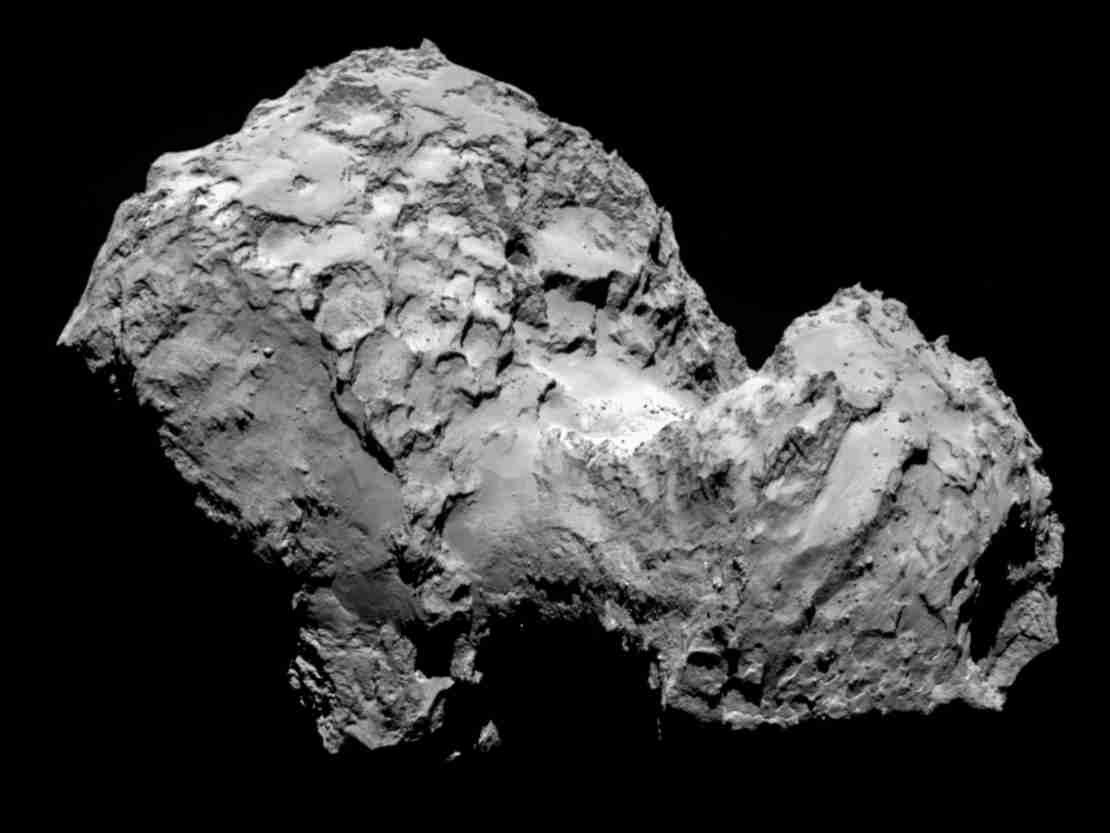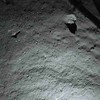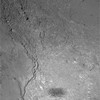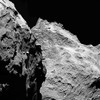This surface is very dark; it reflects only 6 percent of the light it receives. It is made of a black granular material, loose like sand in some places and hard in others. Bare ice appears only in rare wells from which the jets of gas and dust emerge, but ice could also be a relatively minor component of the dark material. The surface of the comet nucleus is very heat-insulating; the surface temperature fluctuates between 120° kelvin (-153° Celsius) and 180° K depending on illumination by the Sun, but these fluctuations are attenuated quickly when one penetrates inside, to stabilize at about 150 K at large depths.
The CONCERT instrument provided unique data on the inside of the nucleus, at least in the part of the head that was the only place that could be explored. They indicate a material made of a mixture of ice and dust. The nature of dust is similar to that of the carbonaceous chondrites (a class of very primitive meteorites). The material is very porous because 80 percent of the volume is empty, which explains the low density of the comet: 533 kg/m3, while the density of the ice is about 900 kg/m3 and that of the dust some five times greater. The refractive index of the comet material decreases with depth, which implies either that the dust is less abundant, or that the medium is increasingly porous at greater depths.
All this confirms and greatly improves the model published in 1950 by Fred Whipple.




